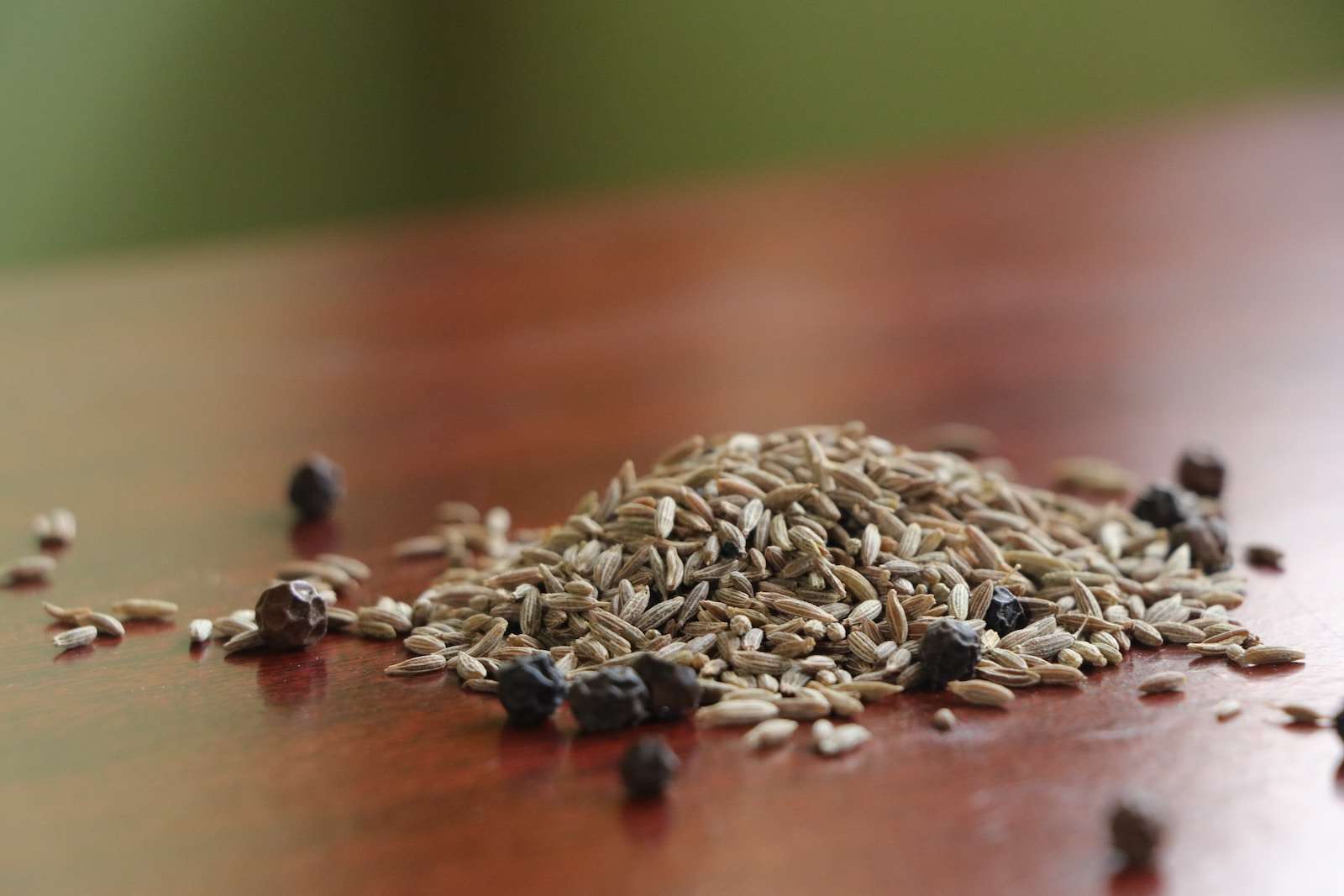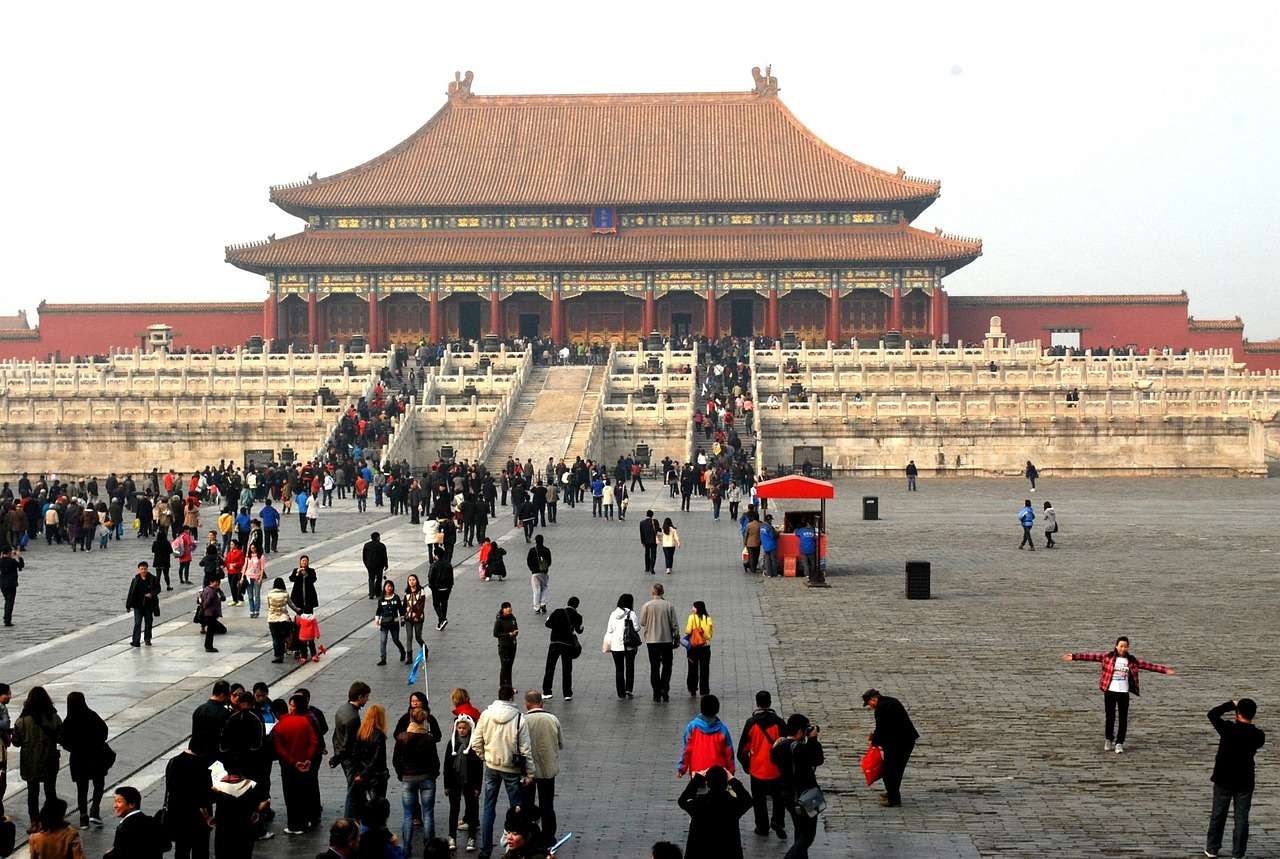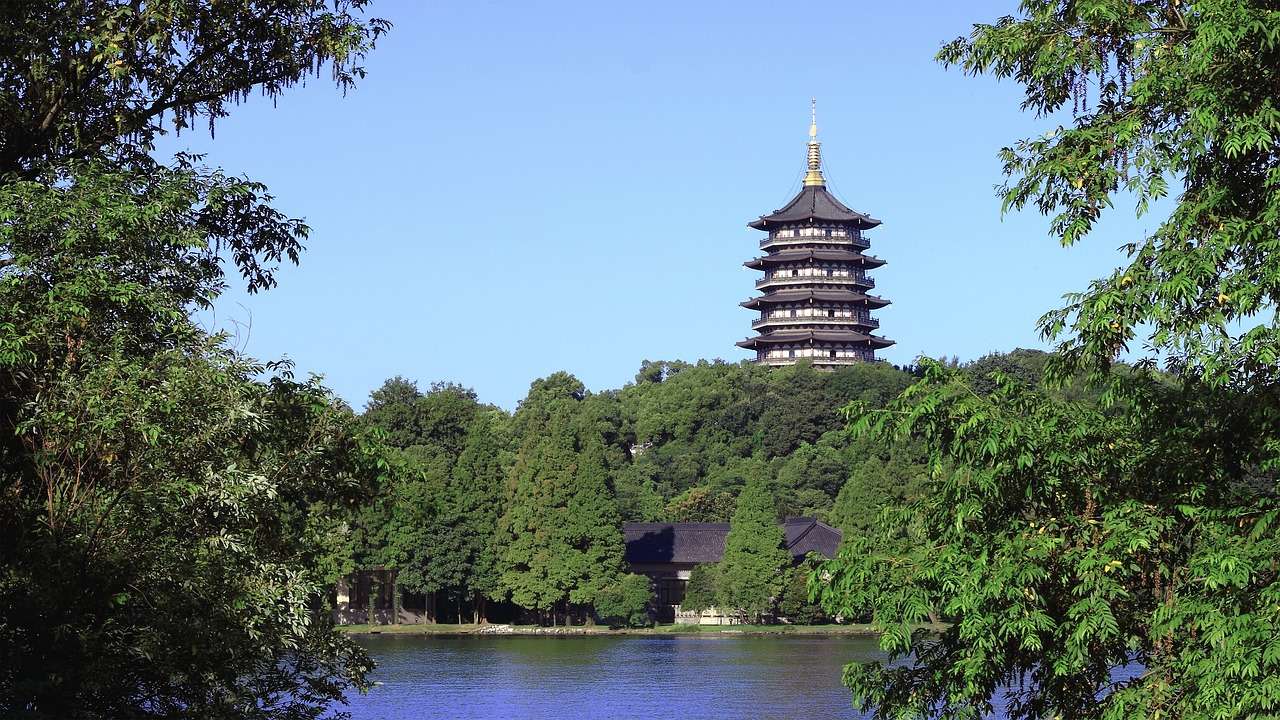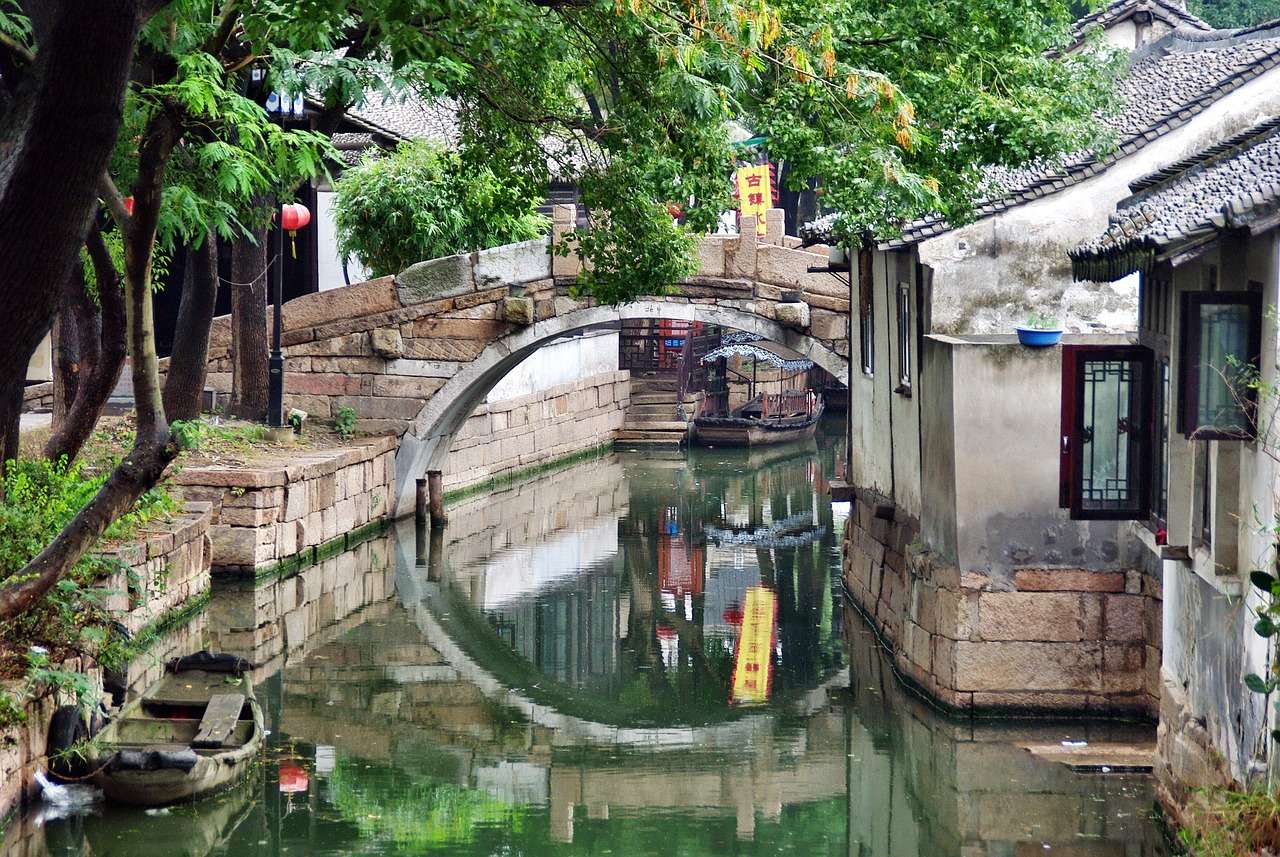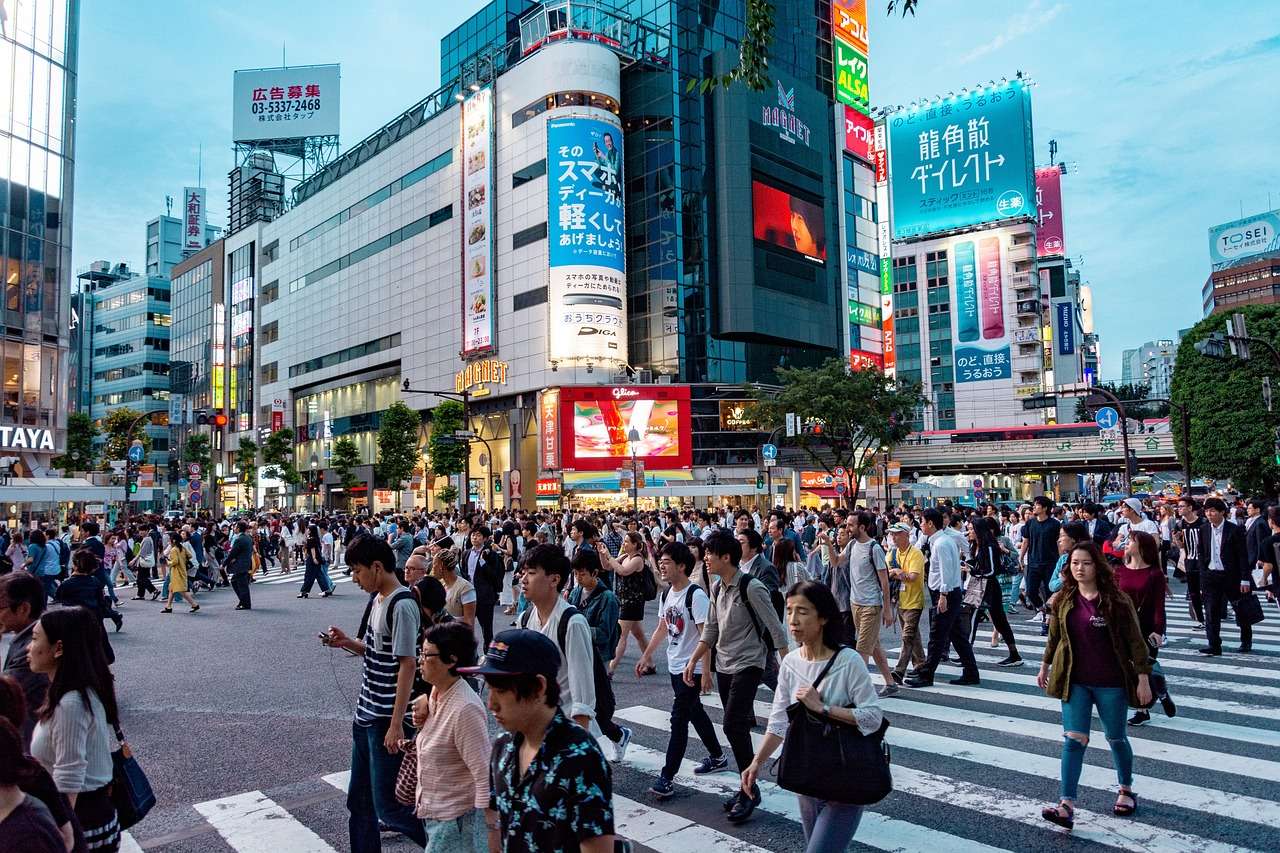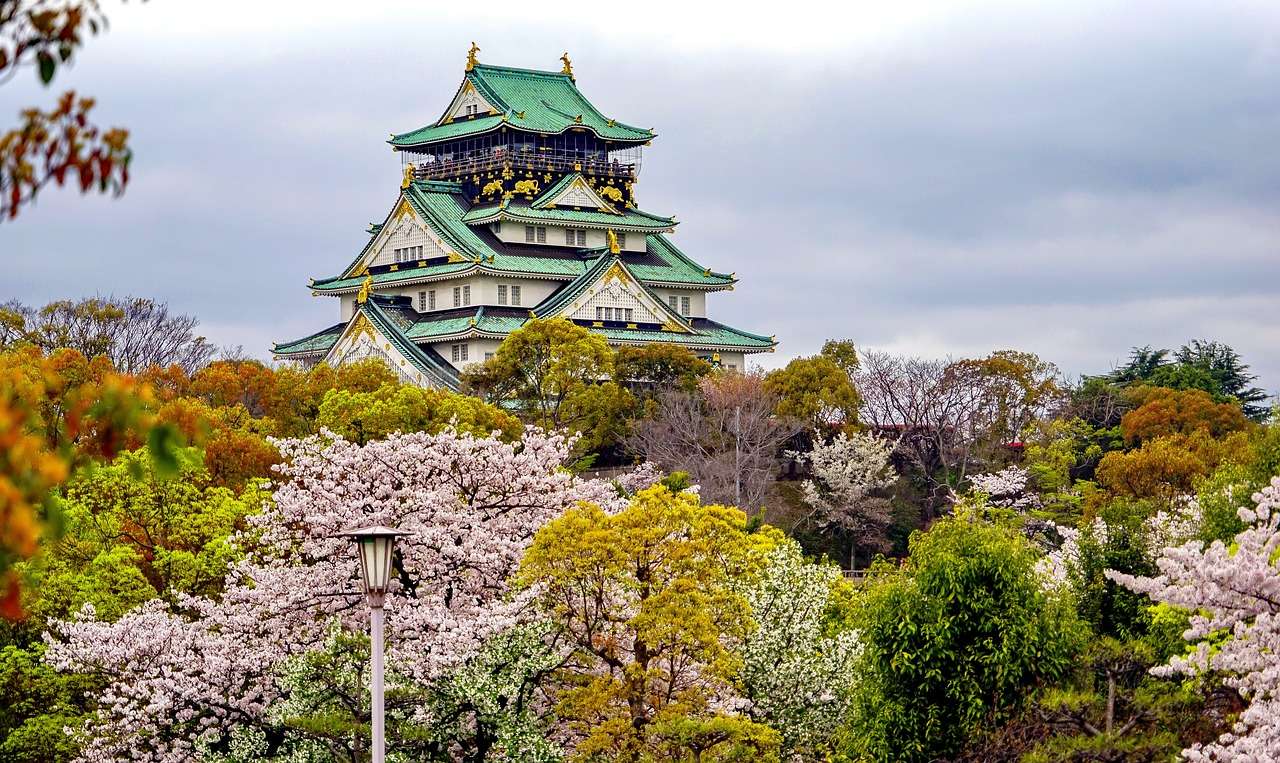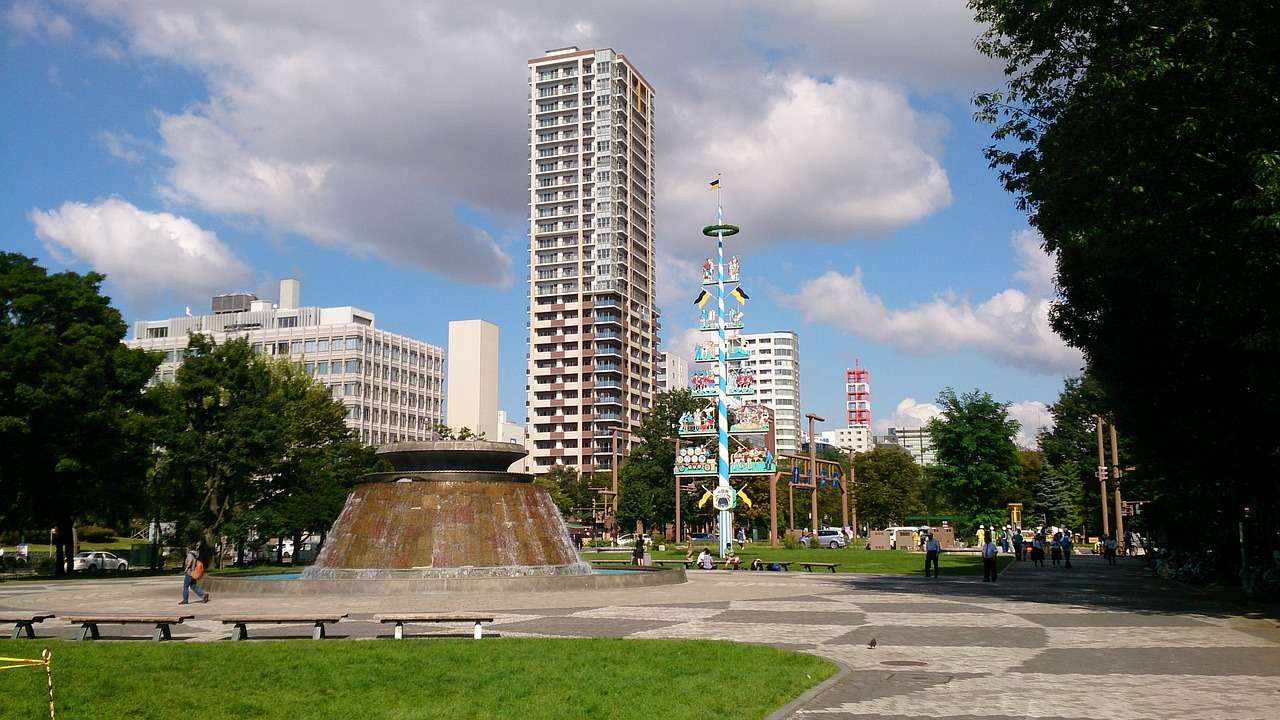Japan, known for its stunning landscapes, rich history, and vibrant culture, is a destination that captivates travelers throughout the year. While many visitors flock to Tokyo and Kyoto, Osaka is often considered a hidden gem that offers a unique blend of modernity and tradition. Whether you’re a foodie, history buff, or simply an adventurer, Osaka has something to offer in every season. Let’s embark on a year-round journey to discover the beauty of Osaka in all seasons.
Spring: Cherry Blossom Delight in Osaka
Springtime in Osaka, Japan, is a spectacle of nature’s artistry, a season when the city dons a cloak of pink and white, and life renews itself with the arrival of cherry blossoms. The ephemeral beauty of sakura, or cherry blossoms, is a cultural and natural phenomenon that captures the hearts of both locals and tourists alike. In this section, we will delve deeply into the enchanting world of Osaka’s spring, exploring the best cherry blossom viewing spots, the rituals of hanami (flower viewing), and the delightful seasonal treats that make this time of year truly magical.
The Cherry Blossom Season
The cherry blossom season in Osaka typically spans from late March to early April. However, the exact timing of the sakura’s bloom can vary each year due to weather conditions, making it crucial for travelers to stay updated on the sakura forecast. To ensure you catch the blossoms at their peak, it’s advisable to plan your trip during this period or check local reports for bloom updates.
The cherry blossoms transform Osaka into a fairy tale landscape, with parks, streets, and riverbanks covered in delicate pink and white petals. The sight of cherry blossoms against the backdrop of historical landmarks and modern skyscrapers is a breathtaking experience that encapsulates the essence of spring in Japan.
Must-Visit Cherry Blossom Spots
- Osaka Castle Park: Perhaps the most iconic cherry blossom spot in the city, Osaka Castle Park is a sprawling oasis of history and natural beauty. The park boasts over 4,000 cherry trees of various varieties, making it a prime location for hanami. The majestic Osaka Castle itself, surrounded by moats and stone walls, creates a stunning contrast to the delicate blossoms.
- Kema Sakuranomiya Park: Located along the Okawa River, this park is a haven for cherry blossom enthusiasts. The riverside promenade is lined with hundreds of cherry trees, providing an idyllic setting for hanami picnics. The sight of illuminated cherry blossoms in the evening is especially enchanting.
- Kansai University: The grounds of Kansai University, particularly the Senriyama Campus, are another hidden gem for cherry blossom viewing. The campus features a picturesque cherry tree-lined avenue, offering a tranquil and less crowded spot for contemplative hanami.
- Japan Mint: The Osaka Mint Bureau opens its gates to the public for one week in mid-April, allowing visitors to stroll along a stunning cherry blossom tunnel. This event is highly anticipated and offers a unique opportunity to immerse yourself in the beauty of sakura.
Hanami Traditions
Hanami, which translates to “flower viewing,” is an age-old Japanese tradition that celebrates the transient beauty of cherry blossoms. During this season, both locals and tourists partake in hanami gatherings, which often involve picnicking under the cherry blossom trees. Here are some essential aspects of hanami traditions in Osaka:
Picnicking Under the Blossoms
Hanami picnics are a central part of the cherry blossom experience in Osaka. Families, friends, and colleagues gather in parks and open spaces to enjoy food, drinks, and each other’s company. It’s common to see groups of people sitting under the trees, often on blankets or tarps, enjoying a leisurely meal. Bento boxes, sake, and a variety of snacks are commonly brought to these gatherings.
Sakura-Themed Food and Drinks
No hanami picnic is complete without sakura-themed treats. Sakura mochi, a sweet rice cake wrapped in a pickled cherry blossom leaf, is a favorite during this season. You can also find sakura-flavored ice cream, sakura-infused tea, and even sakura-inspired alcoholic beverages. These delicacies not only tantalize the taste buds but also enhance the overall hanami experience.
Cherry Blossom Viewing at Night
While hanami during the daytime is a delightful experience, viewing cherry blossoms at night adds a touch of magic to the tradition. Many parks and sakura hotspots in Osaka are illuminated in the evening, creating a dreamlike atmosphere. The sight of cherry blossoms softly glowing under the lights is truly enchanting and is a must-see if you’re in Osaka during this season.
Spring Festivals and Temples
Spring in Osaka isn’t just about cherry blossoms; it’s also a time for celebrating the season’s beauty and the renewal of life. Many temples and shrines host spring festivals that are open to the public. Two notable ones include:
Shitenno-ji Temple
As one of Japan’s oldest Buddhist temples, Shitenno-ji Temple is a cultural and spiritual hub in Osaka. During spring, the temple grounds come alive with the Shitenno-ji Cherry Blossom Festival. Visitors can enjoy cultural performances, food stalls, and of course, hanami beneath the temple’s cherry trees.
Sumiyoshi Taisha Shrine
Sumiyoshi Taisha is known for its unique architectural style and is one of Japan’s most revered shrines. The Spring Festival here is a lively event featuring traditional dances, processions, and a cheerful atmosphere. It’s a chance to witness Japanese culture at its most vibrant.
Planning Your Spring Trip to Osaka
To make the most of your springtime visit to Osaka, here are some practical tips:
Accommodation:
Osaka is a popular destination during cherry blossom season, so it’s advisable to book your accommodations well in advance to secure the best options at reasonable prices. Staying in the city center or near popular sakura spots can be convenient.
Transportation:
Osaka has an efficient public transportation system, including buses and trains, which can take you to various cherry blossom viewing locations. Consider purchasing an Osaka Amazing Pass, which provides unlimited travel on public transportation and access to numerous attractions.
Weather:
Spring weather in Osaka can be unpredictable, so it’s wise to dress in layers and bring an umbrella. Comfortable walking shoes are essential for exploring parks and attending festivals.
Sakura Forecast:
Stay updated on the sakura forecast, which predicts the bloom dates in different regions of Japan. Planning your visit around the peak bloom ensures you witness the cherry blossoms at their most vibrant.
Spring in Osaka is a time of enchantment, a season when the city comes alive with the delicate beauty of cherry blossoms. From the iconic Osaka Castle Park to the serene Kansai University grounds, there are ample opportunities to immerse yourself in the hanami tradition. As you indulge in sakura-themed treats and explore spring festivals, you’ll discover that Osaka’s spring is not merely a season but a profound cultural experience that celebrates the ephemeral beauty of nature. So, pack your picnic basket, bring your camera, and prepare to be captivated by the cherry blossom delight of Osaka.
Summer in Osaka: Festivals, Fireworks, and Cool Escapes
Summer in Osaka is like a burst of energy and joy, a season when the city comes alive with vibrant festivals, electrifying fireworks, and outdoor adventures. The sultry heat and humidity of Japanese summers are offset by the sheer excitement and cultural richness of the season. In this section, we will explore the heart-pounding excitement of Osaka’s summer, including the renowned Tenjin Matsuri festival, the mesmerizing fireworks displays along the Okawa River, and the serene respite offered by Minoo Park’s lush greenery and the delightful fried maple leaf tempura.
The Tenjin Matsuri: A Cultural Extravaganza
Tenjin Matsuri is one of Japan’s oldest and most celebrated festivals, and it occurs annually on the 24th and 25th of July. Rooted in the ancient worship of Sugawara no Michizane, the deity of learning, the festival is a cultural extravaganza that embodies Osaka’s vibrant spirit.
The Festival Procession
The heart of the Tenjin Matsuri is a grand procession that parades through the streets of Osaka, featuring elaborately decorated boats, traditional costumes, and lively music. The highlight of the procession is the “Land Procession” (Chinretsu Gyoretsu), where participants, including Shinto priests, elegantly dressed women, and men in samurai attire, march through the city.
The Water Procession
Equally captivating is the “Water Procession” (Funatogyo), where dozens of traditional boats, adorned with lanterns, glide along the Okawa River. These boats are illuminated beautifully, creating a mesmerizing sight as they move gracefully on the water. The riverbanks are packed with spectators, both locals and tourists, who gather to watch this spectacular event.
Fireworks Extravaganza
One of the festival’s most anticipated highlights is the fireworks display that takes place on the evening of July 25th. The skies over the Okawa River come alive with bursts of color, as thousands of fireworks light up the night. The synchronized explosions, set against the backdrop of the Osaka skyline, create an awe-inspiring spectacle that draws visitors from near and far.
Street Food and Festive Atmosphere
The streets surrounding the festival are lined with food stalls (yatai) serving an array of delicious street food, from takoyaki (octopus balls) and okonomiyaki (savory pancakes) to yakitori (grilled skewers) and kakigori (shaved ice). The festival atmosphere is electric, with locals and visitors alike coming together to celebrate with laughter and joy.
Planning Your Tenjin Matsuri Experience
As the Tenjin Matsuri is one of Osaka’s most famous events, it’s essential to plan your visit carefully to ensure you make the most of this cultural extravaganza:
Accommodation
Given the festival’s popularity, it’s crucial to book your accommodation well in advance. Many visitors aim to stay near the festival’s venue, the Tenmangu Shrine, or along the Okawa River for prime viewing of the fireworks.
Dress Appropriately
July in Osaka can be hot and humid, so dress in light, breathable clothing. However, consider wearing traditional Japanese summer garments like yukata or jinbei for a truly immersive experience.
Arrive Early
To secure a good spot for watching the festival procession and fireworks, arrive early in the day. The streets and riverbanks can get crowded quickly.
Be Prepared for Crowds
The Tenjin Matsuri is a major event, and crowds are a part of the experience. If you’re not a fan of large crowds, consider finding a quieter spot to view the procession or fireworks from a distance.
A Cool Escape to Minoo Park
While the Tenjin Matsuri offers high-energy excitement, summer in Osaka can also be an opportunity to seek respite from the heat and revel in nature’s beauty. For a more laid-back and cooling experience, Minoo Park is the perfect escape.
Lush Greenery and Waterfalls
Located just north of Osaka, Minoo Park is a haven of lush greenery, winding trails, and the soothing sounds of waterfalls. The park is especially famous for its namesake waterfall, the Minoo Waterfall (Minoo no Taki). This 33-meter-tall cascade is surrounded by verdant forest, creating a refreshing oasis of cool air. The walk to the waterfall is picturesque and takes about 30 minutes from the park’s entrance.
Hiking Trails
Minoo Park offers various hiking trails of different lengths and difficulty levels, making it suitable for both casual strollers and avid hikers. The trails wind through the forested hills, providing glimpses of native flora and fauna along the way.
Try the Local Specialty: Fried Maple Leaf Tempura
A unique culinary delight awaits you in Minoo Park: fried maple leaf tempura. Vendors along the trail offer this regional specialty, which involves deep-frying maple leaves in a light tempura batter. It’s a sweet and crispy treat that’s emblematic of the park and an absolute must-try when visiting.
Enjoy a Relaxing Picnic
Minoo Park is also an ideal spot for a peaceful picnic. Many visitors bring their own food and enjoy it in the tranquil surroundings, often by the riverside or near the waterfall. It’s a serene and refreshing way to spend a summer day.
Practical Tips for Visiting Minoo Park
When planning your visit to Minoo Park during the summer, consider the following tips:
Transportation
Minoo Park is easily accessible from Osaka. You can take a train from Osaka’s Hankyu-Umeda Station to Minoo Station. From there, it’s a short walk to the park’s entrance.
Timing
Minoo Park is beautiful year-round, but the lush greenery and the waterfall are particularly refreshing in the summer. Arriving early in the morning or on a weekday can help you avoid crowds.
Comfortable Attire
Wear comfortable walking shoes and dress in light, breathable clothing suitable for hiking and outdoor activities.
Be Mindful of Nature
Respect the natural environment of Minoo Park by not littering and refraining from disturbing wildlife. Stay on designated paths and trails to preserve the park’s beauty.
In conclusion, summer in Osaka offers a dynamic contrast between the electrifying energy of the Tenjin Matsuri and the serene escape of Minoo Park. The festival’s grand procession, illuminated boats, and spectacular fireworks create a mesmerizing spectacle that should not be missed. On the other hand, Minoo Park’s lush greenery, calming waterfalls, and unique culinary offerings provide a perfect antidote to the summer heat. Whether you seek the thrill of a cultural extravaganza or the tranquility of nature, Osaka in summer has something to offer every traveler, making it a destination that continues to captivate visitors year after year.
Autumn in Osaka: A Symphony of Colors and Culinary Delights
Autumn in Osaka is a time of enchantment, as the city undergoes a stunning transformation. The sweltering summer heat gradually gives way to cooler temperatures, and the lush green landscape begins to explode into a brilliant tapestry of fiery reds, golden yellows, and deep oranges. From late November to early December, Osaka becomes a haven for nature lovers and food enthusiasts alike. In this section, we will immerse ourselves in the mesmerizing beauty of Osaka’s autumn foliage, explore the best spots for leaf-peeping, and savor the seasonal delights that grace the city’s food festivals.
The Spectacle of Autumn Foliage
The autumn foliage in Osaka is a sight to behold, as the city’s parks, mountains, and riverside areas are adorned with a breathtaking display of vibrant colors. As the weather turns cooler and the days grow shorter, the leaves of deciduous trees transform into shades of red, orange, and gold, creating a stunning contrast against the city’s urban backdrop.
Best Time to Visit
The optimal time to witness the fiery hues of autumn foliage in Osaka is from late November to early December. During this period, the leaves are at their peak, and the city’s parks and natural areas are bathed in a warm, golden light.
Prime Locations for Leaf-Peeping
- Minoo Park: This verdant oasis, famous for its waterfall, is also one of Osaka’s prime spots for autumn foliage. The hiking trails that wind through the park offer stunning vistas of maple trees ablaze with color. The Minoo Waterfall, surrounded by vibrant leaves, is particularly captivating during this season.
- Mount Kongo: Located on the outskirts of Osaka, Mount Kongo is another top destination for leaf-peeping. It’s the highest peak in Osaka Prefecture and offers panoramic views of the surrounding mountains and valleys painted in autumn colors. Hiking up the mountain trails provides an immersive experience in the midst of nature’s seasonal splendor.
- Minoh Waterfall: The Minoh Waterfall area is known for its stunning autumn scenery. The hiking trail leading to the waterfall is lined with maple trees, creating a tunnel of vibrant foliage. The sight of the waterfall framed by red and gold leaves is a photographer’s dream.
Hiking and Outdoor Activities
Autumn in Osaka is the perfect time for outdoor enthusiasts. Hiking in the cool, crisp air amidst the vivid foliage is a rejuvenating experience. The well-maintained trails in places like Minoo Park and Mount Kongo offer opportunities for hikers of all skill levels. Don’t forget to pack a picnic and enjoy your meal amidst the natural beauty.
Seasonal Food Festivals
In addition to the visual spectacle of autumn, this season in Osaka also brings a culinary extravaganza. The city’s food festivals celebrate the harvest and the flavors of autumn with a delightful array of dishes and treats.
Takoyaki Festivals
Takoyaki, a beloved street food in Osaka, takes center stage during autumn festivals. These savory octopus balls are cooked to perfection in specialized molds and topped with various condiments, including takoyaki sauce, mayonnaise, bonito flakes, and seaweed. At autumn festivals, you can find vendors offering creative variations of takoyaki, ranging from classic to innovative flavors.
Kuri (Chestnut) Festivals
Chestnuts, or kuri, are a quintessential autumn ingredient in Japanese cuisine. During the autumn months, you’ll find kuri festivals in Osaka where you can savor a variety of dishes and sweets made from chestnuts. Roasted chestnuts, chestnut rice cakes, and chestnut Mont Blanc desserts are among the delightful treats you can enjoy.
Other Seasonal Delights
Autumn also heralds the arrival of other seasonal ingredients and dishes. Look out for dishes featuring mushrooms, sweet potatoes, persimmons, and pears. Warm, comforting meals like sukiyaki and shabu-shabu are especially popular during this season, offering a perfect balance to the cooler weather.
Planning Your Autumn Journey
To make the most of your autumn trip to Osaka, consider the following tips:
Timing
Check the autumn foliage forecast for Osaka to plan your visit during the peak of the season. Late November to early December is typically the best time for leaf-peeping.
Clothing
Pack layers, as the weather can be cool in the mornings and evenings but warm during the day. Comfortable walking shoes and a light jacket or sweater are essential for outdoor activities.
Transportation
If you plan to visit Minoo Park, Mount Kongo, or the Minoh Waterfall area, public transportation options are available. Trains and buses can take you to these locations from central Osaka.
Local Events
Keep an eye out for local events and festivals happening during your visit. Autumn festivals often feature traditional music, dance performances, and cultural exhibitions that provide insights into Japanese heritage.
Accommodation
While Osaka is not as crowded as Kyoto during the autumn season, it’s still advisable to book your accommodation in advance, especially if you plan to stay near popular leaf-peeping spots.
Autumn in Osaka is a symphony of colors and flavors, a season when nature’s artistry and culinary delights come together to create a memorable experience. Whether you’re hiking through the vibrant foliage of Minoo Park, savoring takoyaki at a local festival, or indulging in chestnut sweets, the city offers a diverse range of activities to immerse yourself in the spirit of autumn. It’s a time when Osaka showcases its natural beauty and rich culinary heritage, making it a destination that continues to captivate travelers year after year. So, pack your camera and your appetite, and embark on an unforgettable autumn journey to the heart of Japan’s Kansai region.
Winter in Osaka: Illuminations, Festive Spirit, and Comforting Cuisine
Winter in Osaka is a magical time when the city embraces the holiday season with enchanting illuminations, festive celebrations, and a culinary landscape that warms the heart. While it may not experience the heavy snowfall of northern Japan, Osaka compensates with its own unique charm that captivates both locals and visitors. In this section, we will delve into the winter wonderland of Osaka, exploring the captivating illuminations at Osaka Castle, the warmth of comforting hotpot dishes like sukiyaki and shabu-shabu, and the sizzling street food delights that define the city’s culinary scene during this season.
The Osaka Castle Illuminage: A Dazzling Winter Wonderland
One of the most anticipated events in Osaka during the winter season is the Osaka Castle Illuminage. This stunning illumination event transforms the iconic Osaka Castle and its surrounding grounds into a dazzling winter wonderland, making it a must-visit destination for both tourists and locals alike.
A Sea of Twinkling Lights
The Osaka Castle Illuminage typically begins in early November and runs through the end of February. During this time, millions of LED lights are meticulously arranged to create a breathtaking display. The castle’s exterior is bathed in a soft, multicolored glow, while the surrounding trees and gardens twinkle with delicate lights, casting a warm and enchanting atmosphere.
Thematic Displays
Each year, the Osaka Castle Illuminage features different themes and artistic displays that captivate visitors. The themes often draw inspiration from nature, history, or seasonal motifs. From ethereal cherry blossom scenes to magical winter wonderlands, the creative displays offer a fresh and captivating experience with every visit.
Entertainment and Activities
The Illuminage event isn’t limited to just admiring the lights. Visitors can enjoy a range of entertainment options, including musical performances, light shows, and interactive art installations. There are often food stalls and vendors selling seasonal treats and hot drinks to keep you warm as you explore the dazzling displays.
Perfect for Couples and Families
The romantic ambiance of the Osaka Castle Illuminage makes it a popular spot for couples, especially during the holiday season. The illuminated castle and serene gardens provide an ideal backdrop for romantic strolls and memorable photos. Families with children will also find the event enchanting, as it evokes the magic of the holidays.
Comforting Hotpot Dishes: Sukiyaki and Shabu-Shabu
Winter in Osaka is not just about visual delights; it’s also a season for indulging in hearty and comforting cuisine. Japanese hotpot dishes like sukiyaki and shabu-shabu come into the spotlight, offering warmth and satisfaction during the chilly months.
Sukiyaki
Sukiyaki is a beloved Japanese hotpot dish known for its rich and savory flavor. Thin slices of high-quality beef are simmered in a sweet soy-based broth, often accompanied by vegetables such as mushrooms, tofu, and leafy greens. The ingredients are cooked at the table, and diners can dip them into beaten raw egg before savoring each delicious bite. Sukiyaki is a comforting and communal meal that warms both the body and the soul.
Shabu-Shabu
Shabu-shabu is another popular Japanese hotpot dish that’s perfect for winter. It consists of thinly sliced meat, typically beef or pork, and an assortment of vegetables. The ingredients are cooked in a simmering pot of broth at the table. What makes shabu-shabu unique is the dipping sauce – a combination of sesame sauce, ponzu (citrus-based sauce), and other condiments. The name “shabu-shabu” is derived from the sound of swishing the ingredients in the hot broth, which is said to enhance their flavor.
Where to Enjoy Sukiyaki and Shabu-Shabu
Osaka boasts a wide range of restaurants and eateries where you can savor these comforting hotpot dishes. You can find everything from traditional, high-end sukiyaki and shabu-shabu restaurants to more casual and budget-friendly options. The Dotonbori area in central Osaka is a food lover’s paradise, offering a variety of dining establishments where you can enjoy these winter specialties.
Osaka Street Food: Takoyaki and Okonomiyaki
While sukiyaki and shabu-shabu are popular for a sit-down meal, Osaka’s street food scene comes alive in the winter months, offering a quick and satisfying way to warm up. Among the most iconic street foods are takoyaki and okonomiyaki.
Takoyaki
Takoyaki are savory octopus balls that are a quintessential Osaka street food. The batter, mixed with diced octopus, tempura scraps, green onions, and pickled ginger, is poured into round molds. As the balls cook on a griddle, they’re continually turned to achieve a crispy exterior and a soft, doughy interior. Takoyaki are typically drizzled with takoyaki sauce, mayonnaise, bonito flakes, and seaweed flakes. They are served piping hot, making them the perfect snack to enjoy while exploring the city’s winter festivities.
Okonomiyaki
Okonomiyaki is often described as a “Japanese pancake” or “Japanese pizza,” but it’s a unique and savory dish in its own right. The batter is made with flour, grated yam, eggs, and shredded cabbage. Depending on your preference, you can add various ingredients such as pork, seafood, or cheese. The mixture is cooked on a griddle and topped with okonomiyaki sauce, mayonnaise, bonito flakes, and seaweed. It’s a satisfying and customizable street food that’s perfect for warming up on a chilly winter evening.
Where to Find Takoyaki and Okonomiyaki
Osaka is renowned for its vibrant street food culture, and you can find takoyaki and okonomiyaki stalls throughout the city. Dotonbori, with its bustling streets and neon lights, is a street food hub where you can sample these iconic dishes from numerous vendors. There are also dedicated okonomiyaki restaurants where you can enjoy the dish in a more traditional setting.
Planning Your Winter Retreat in Osaka
To make the most of your winter journey to Osaka, consider these practical tips:
Illumination Event Schedule
Check the schedule for the Osaka Castle Illuminage and any other illumination events you plan to attend. Events may start as early as November and continue through February, so plan your visit accordingly.
Warm Clothing
While Osaka doesn’t experience extreme cold, the winter months can still be chilly, especially in the evenings. Dress in warm layers and bring a jacket or coat to stay comfortable.
Dining Reservations
For popular sukiyaki and shabu-shabu restaurants, it’s advisable to make reservations in advance, especially during peak dining hours. Street food stalls don’t require reservations and are readily available in popular areas.
Local Events
Explore local event calendars to discover holiday markets, festivals, and cultural celebrations happening during your visit. These events often feature seasonal crafts, entertainment, and unique gifts.
Accommodation
Booking accommodations in advance is a good idea, as winter can be a popular time for tourism. Consider staying in the heart of Osaka or near popular winter attractions.
Winter in Osaka is a season of enchantment, where the city sparkles with captivating illuminations, festive celebrations, and a comforting culinary landscape. Whether you’re strolling through the mesmerizing lights of the Osaka Castle Illuminage, savoring sukiyaki and shabu-shabu in a cozy restaurant, or enjoying takoyaki and okonomiyaki from street vendors, Osaka’s winter offerings are sure to warm your heart and create lasting memories. It’s a season that showcases the city’s unique blend of tradition and modernity, making it a destination that beckons travelers to explore its wonders year after year. So, bundle up, bring your appetite, and embrace the charm of winter in Osaka.
Year-Round Attractions in Osaka: Where Every Season is a Delight
While the changing seasons in Osaka bring their unique charms and experiences, there are certain attractions in the city that offer year-round enjoyment. Whether you’re visiting during spring’s cherry blossom season, summer’s festivals and fireworks, autumn’s stunning foliage, or winter’s illuminations and comfort food, these attractions remain a constant source of fascination and delight. In this section, we will explore the timeless allure of Osaka’s year-round attractions, from the bustling streets of Dotonbori to the serene tranquility of Shitenno-ji Temple.
Dotonbori: The Heartbeat of Osaka
Dotonbori is the beating heart of Osaka, a district that pulsates with energy and offers a captivating blend of entertainment, cuisine, and culture. It’s an attraction that beckons visitors year-round, providing a dynamic experience that’s constantly evolving.
Neon Lights and Iconic Signage
One of the defining features of Dotonbori is its mesmerizing neon signage. The area’s streets are adorned with colossal signs featuring everything from giant crabs and dragons to the iconic Glico Running Man. These neon displays come to life at night, creating a visually stunning and electric atmosphere.
Street Food Extravaganza
Dotonbori is renowned for its vibrant street food scene, offering a plethora of mouthwatering treats that can be savored any time of year. Takoyaki (octopus balls), okonomiyaki (savory pancakes), kushikatsu (deep-fried skewers), and takosen (octopus dumplings) are just a few of the delectable options you can find at street stalls and casual eateries. The aroma of sizzling street food wafts through the air, enticing passersby with its irresistible allure.
Dining and Entertainment
Beyond street food, Dotonbori boasts a wide range of dining options, from traditional izakayas (Japanese pubs) to contemporary restaurants serving Japanese and international cuisine. It’s also a hub for nightlife, with bars, clubs, and theaters providing entertainment well into the late hours.
Shinsaibashi Shopping Arcade
Adjacent to Dotonbori is the Shinsaibashi Shopping Arcade, a bustling retail district that offers a vast array of shops, boutiques, and department stores. It’s a shopping haven where you can find everything from fashion and electronics to traditional Japanese goods and souvenirs.
Osaka Aquarium Kaiyukan: An Oceanic Adventure
Osaka Aquarium Kaiyukan is a world-class attraction that invites visitors to embark on an underwater journey through various aquatic ecosystems. This captivating marine facility is located in the Tempozan Harbor Village and is a must-visit for travelers of all ages.
A Global Showcase of Marine Life
Kaiyukan showcases marine life from all corners of the globe, providing an educational and immersive experience. The facility is divided into zones representing different regions and habitats, including the Pacific Ocean, Antarctic, Great Barrier Reef, and more. Visitors can encounter a diverse range of marine creatures, including sharks, rays, penguins, and jellyfish.
The Enchanted Kelp Forest
One of the highlights of Kaiyukan is the enchanting kelp forest exhibit. As you walk through a transparent tunnel, you are surrounded by towering kelp fronds and a myriad of marine life, creating a magical and otherworldly atmosphere. The sensation of being submerged in an underwater forest is truly awe-inspiring.
Touch Pools and Interactive Exhibits
For a hands-on experience, Kaiyukan offers touch pools and interactive exhibits where visitors can get up close and personal with marine animals. From gently stroking stingrays to watching sea otters play, these interactive encounters make the aquarium visit both fun and educational.
The Giant Pacific Octopus
Kaiyukan is renowned for its resident Giant Pacific Octopus, a truly mesmerizing and intelligent creature. Observing the octopus’s movements and behavior is a highlight for many visitors. The aquarium’s careful attention to the welfare of its animals ensures a comfortable and enriching environment for all the marine species in its care.
Universal Studios Japan: A World of Entertainment
Universal Studios Japan (USJ) is a year-round entertainment destination that offers a world of excitement and fun. With a wide range of attractions based on popular movies and shows, it’s a place where fantasy and reality come together to create unforgettable experiences.
Iconic Movie-Themed Attractions
USJ features a variety of attractions inspired by blockbuster films and beloved franchises. Whether you’re a fan of Harry Potter, Jurassic Park, Despicable Me, or The Wizarding World of Harry Potter, you’ll find immersive rides, shows, and experiences that transport you into these cinematic worlds.
The Wizarding World of Harry Potter
One of the standout attractions at USJ is The Wizarding World of Harry Potter, a magical realm that faithfully recreates the iconic locations from the beloved book and film series. From sipping butterbeer at the Three Broomsticks to exploring Hogwarts Castle and its groundbreaking rides, it’s an enchanting experience for fans of all ages.
Seasonal Events and Entertainment
USJ hosts a variety of seasonal events and special entertainment throughout the year, ensuring that every visit offers something new and exciting. These events often include parades, shows, and interactive experiences that bring the magic of movies and television to life.
Dining and Shopping
The theme park offers a wide range of dining options, from themed restaurants to casual eateries serving international cuisine. You can also shop for merchandise inspired by your favorite movies and characters at various stores throughout the park.
Shitenno-ji Temple: Serenity in the City
Shitenno-ji Temple is one of Japan’s oldest temples and is a serene oasis in the heart of bustling Osaka. Founded in 593 AD, it has a rich history and offers visitors a tranquil escape from the urban hustle and bustle.
Architectural Beauty
The temple’s architecture is a testament to the elegance and artistry of Japanese Buddhist temple design. The main hall, five-story pagoda, and beautiful gardens showcase the traditional aesthetics of Japanese temple architecture. The serenity of the temple grounds provides a peaceful contrast to the vibrant energy of the city.
Cultural and Religious Significance
Shitenno-ji is not only a place of historical significance but also a center for religious practice and cultural activities. Visitors can witness ceremonies and rituals, explore the temple’s museum, and participate in cultural events and festivals held throughout the year.
Explore the Grounds
The temple’s expansive grounds offer ample space for contemplation and exploration. Strolling along the paths, you’ll encounter lush gardens, tranquil ponds, and sacred shrines. The temple’s peaceful ambiance invites visitors to reflect and find inner peace.
Souvenirs and Cultural Experiences
The temple complex also includes a marketplace where you can purchase souvenirs, traditional crafts, and religious items. Additionally, you can participate in cultural experiences, such as calligraphy and meditation sessions, to gain a deeper understanding of Japanese spirituality and culture.
Kuromon Ichiba Market: A Food Lover’s Paradise
Kuromon Ichiba Market, often referred to as “Osaka’s Kitchen,” is a bustling food market that beckons visitors with its mouthwatering array of street food, fresh produce, and culinary delights. This year-round attraction is a haven for food enthusiasts seeking an authentic taste of Osaka’s culinary culture.
Fresh Produce and Seafood
Kuromon Ichiba Market is a treasure trove of fresh, seasonal ingredients. Local and international visitors alike come here to explore stalls overflowing with vibrant fruits, vegetables, and an astonishing variety of seafood. From sashimi-grade fish to succulent crab legs, the market offers a seafood lover’s dream.
Street Food Galore
One of the highlights of Kuromon Ichiba Market is the abundance of street food stalls and vendors serving up a tantalizing array of treats. Takoyaki, okonomiyaki, kushikatsu, tempura, and grilled scallops are just a few of the mouthwatering options available for immediate indulgence.
Regional Delicacies
Kuromon Ichiba Market is also a place to sample regional and seasonal delicacies. You can savor specialties like fugu (blowfish), Kobe beef, and a wide variety of sushi and sashimi. Whether you’re in the mood for traditional Japanese fare or international flavors, the market has something to satisfy every palate.
Shopping for Kitchenware
In addition to its culinary offerings, the market features shops selling kitchenware, utensils, and cookware. It’s an excellent place to pick up unique Japanese kitchen gadgets and tools to take home as souvenirs.
Planning Your Year-Round Adventure
To make the most of your visit to these year-round attractions in Osaka, consider the following tips:
Operating Hours
Check the operating hours and admission fees for each attraction before your visit, as they may vary depending on the time of year and any special events or holidays.
Ticketing and Reservations
For popular attractions like Universal Studios Japan, it’s advisable to purchase tickets in advance, especially during peak tourist seasons. Many attractions offer online ticketing options for added convenience.
Guided Tours
Consider joining guided tours for a more immersive and informative experience at attractions like Shitenno-ji Temple, where you can gain insights into the temple’s history and cultural significance.
Local Events
Keep an eye on local event calendars to discover any special events, festivals, or performances happening at these attractions during your visit. These events can enhance your experience and offer a deeper connection to Osaka’s culture.
Public Transportation
Use Osaka’s efficient public transportation system, including trains and buses, to navigate the city and reach these attractions easily. Some attractions may offer convenient shuttle services from major transportation hubs.
In conclusion, Osaka’s year-round attractions offer a diverse and captivating array of experiences that cater to all interests and preferences. Whether you’re exploring the vibrant streets of Dotonbori, embarking on an oceanic adventure at Osaka Aquarium Kaiyukan, immersing yourself in the world of entertainment at Universal Studios Japan, finding serenity at Shitenno-ji Temple, or indulging in the culinary wonders of Kuromon Ichiba Market, you’ll discover that Osaka’s appeal transcends the seasons. So, no matter when you visit, rest assured that there are timeless treasures waiting to be explored and enjoyed in this dynamic and vibrant city.

